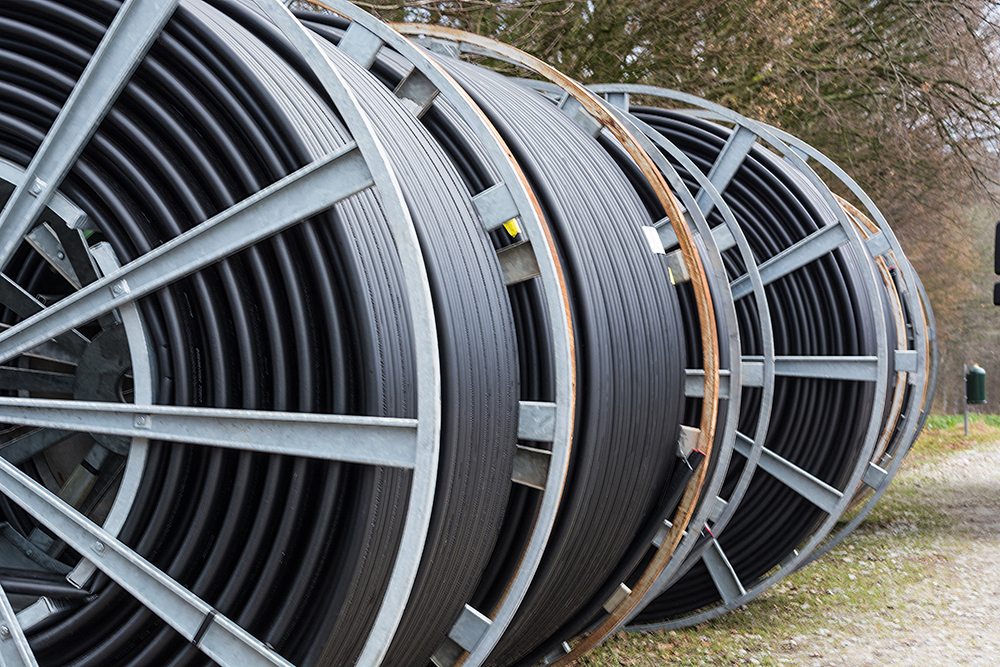First of the new package’s dollars out the door are expected to be highway, EPA water funds distributed by formulas

Article written by Tom Ichniowski, Aileen Cho, Pam McFarland, James Leggate, and Debra K. Rubin and posted on on the ENR.com
With President Joe Biden’s Nov. 15 signing of the Infrastructure Investment and Jobs Act, or IIJA, federal agencies are stepping up plans to implement the landmark package, estimated at $1 trillion over five years.
The overriding question for states, localities, construction and engineering companies is: When will the dollars for year one start to flow?
The answer varies by agency and by individual programs the legislation creates or expands. But in general, funds from existing programs that distribute their dollars according to long-set formulas will “go out” the quickest. Funds from new programs established under the IIJA will move more slowly as the agencies hire more staff, develop grant-selection criteria and issue guidance to industry and local governments.
Highways Early Out of the Gate
Funds for the federal-aid highway program, including bridges, represent the largest share of the total infrastructure package, with about $351 billion over five years, according to a summary from the American Association of State Highway and Transportation Officials.
For fiscal year 2022, about $59.2 billion will be distributed by the Federal Highway Administration among the states according to an established formula, which includes factors such as a state’s population and highway lane-miles. State DOTs will be key players, because they will let the lion’s share of the contracts and obligate the vast majority of the funds for those projects. They will be reimbursed by FHWA.
Jeff Davis, Eno Center for Transportation senior fellow, says that $59 billion in apportioned 2022 highway funding—up $13.8 billion, or 30%, from 2021—should go out to states by the end of the year.
Alison Premo Black, the American Road &Transportation Builders Association’s chief economist, says, “What we tell people is that states will be obligating most of that [formula highway money] during this fiscal year.”
Susan Howard, AASHTO program director for transportation finance, says in addition to core formula dollars, the IIJA gives the U.S. Dept. of Transportation a large amount of discretionary funding— “billions and billions of dollars that will go out through competitive grants.” Some of that will be increases to existing discretionary programs, such as the RAISE (formerly BUILD and TIGER) grants.
Among the brand-new discretionary grant programs is one that will provide $12.5 billion over five years “to fix up to 10 of the most economically significant bridges,” Deputy Secretary Polly Trottenberg said in a Nov. 9 press briefing.
“What we tell people is that states will be obligating most of that [formula highway money] during this fiscal year.”
— Alison Premo Black, ARTBA chief economist.
An FHWA spokesman says the agency doesn’t have a list of those bridges yet. One likely applicant is the Brent Spence Bridge across the Ohio River between Cincinnati and Covington, Ky. Sen. Rob Portman (R-Ohio) said at the bill signing, said the bridge is “a major bottleneck desperately in need of replacing.
States also have to put up matching funds for federally aided highway projects.
Transit New Starts Get a Boost
For transit programs, the bill provides $91 billion over five years, a 77% increase over levels in the 2015 Fixing America’s Surface Transportation Act, the last major multiyear surface transportation bill, says Federal Transit Administration head Nuria Fernandez. In a Nov. 15 interview with ENR, Fernandez said the current backlog for repairs and upgrades to transit projects is $105 billion.
For FTA’s key Capital Investment Grants program, which includes new transit starts, the bill provides $23 billion, up nearly 50%, she said.
But Fernandez said that before her agency can release the funds to regional or local agencies, Congress needs to approve an appropriations measure for the rest of fiscal year 2022. At present, U.S. DOT’s funding expires Dec. 3.
Once Congress passes an appropriations bill, “The monies that usually move first are the formula monies,” Fernandez says. FTA first will release apportionment tables notifying states of their respective funding shares.
Among non-formula FTA programs, Fernandez says, the Capital Investment Grants are likely to be released first. She says the agency already has full-funding grant agreements with regional transit agencies for a number of projects. The new, sharply increased IIJA authorizations, and then appropriations, would let FTA provide funding to meet existing commitments sooner, she adds.

The new infrastructure act adds four new FTA programs to the agency’s existing six. They include an All-Station Accessibility Program, which will receive $1.75 billion over five years. Its funding will take longer to roll out than the funds for the established CIG program.
Jannet Walker-Ford, national transit and rail leader for WSP, said companies seeking to build transit projects funded by the IIJA face worker shortages. But she says clients are already prioritizing projects that meet the administration’s goals of equity in infrastructure, such as expanding stations in underserved, transit-dependent communities.
“Projects like these don’t just happen,” says Greg Kelly, CEO of STV. “They take collaboration from the public and private sectors to get them on the street.” He noted in an industry group conference panel presentation last month that public agencies also face staff shortages as they boost efforts to prepare project work packages.
A prominent topic among speakers at an American Public Transportation Association’s conference held Nov. 7-10, was how federal agencies will pivot to handle the expected increase in grant and loan applications. Peter Rogoff, a former FTA administrator and now CEO of Seattle’s Sound Transit, noted that “we are putting a lot of money on the street; bids are very high. Costs are high. How will the FTA [address] that?”
In a Nov. 15 media briefing, some transit officials called on FTA to speed up projects’ environmental reviews. Paul Hubler, director of community and government relations for the $1.8-billion Alameda Corridor-East program in Southern California, said the program has two “shovel-ready” rail grade-separation projects. He noted that one has cleared its National Environmental Policy Act review, but the other has not. “If we were to secure funds, the clearance could take a year,” Hubler said.
One IIJA policy provision that could help is codification of a Trump administration directive for “one federal decision” on NEPA reviews. It sets a target of completing federal project reviews within two years, in general.
Lead Pipes, Equity Targeted
The U.S. Environmental Protection Agency will work immediately with states and localities to begin the rollout of funds, says Radhika Fox, assistant administrator for water. Of the package’s $50 billion set for water infrastructure, $23.4 billion will be funneled through the existing clean- and drinking-water state revolving fund programs, essentially “supercharging” them, Fox said in a Nov. 9 briefing.
The bill’s infusion of funds over the next five years is welcome, but not a “panacea,” notes Adam Krantz, the National Association of Clean Water Agencies’ executive director. It takes time to plan, design and get a permit for a new project, he says, and each water utility’s share of total funding is too small to cover the cost of an entire project.
Although SRF funds are typically loans, not direct grants, the new law increases the percentage of the funding that is forgivable, a portion of which will be targeted to low-income communities.
Municipalities typically have covered almost 95% of the total cost of water infrastructure projects. “This at least starts to rebalance that a little in the right direction,” Krantz says.
The new infrastructure measure also includes $15 billion in direct funding for lead service-line replacements, and $10 billion—also in grants—to address PFAS, per- and polyfluoroalkyl substances.
The cost to replace 100% of the lead service lines in the United States has been estimated to surpass $45 billion, according to the Brookings Institution. Although the IIJA’s funding for lead service line work is much less than that, Fox says the funding will be targeted to communities disproportionately affected by lead contamination.

States Key in Broadband
The infrastructure package includes $65 billion for high-speed broadband internet, of which $48 billion will go to the Commerce Dept.’s National Telecommunications and Information Administration to fund broadband infrastructure grant programs.
NTIA will use $42.5 billion for grants to states and U.S. territories. Each state will receive a minimum of $100 million; each territory gets a minimum of $20 million. Funds will go for high-speed broadband deployment to households and businesses that lack such services. The rest will be allocated based on need, primarily on the number of households and business locations currently unserved by high-speed broadband, says Commerce Deputy Secretary Don Graves.
Another $2 billion will go to the Tribal Broadband Connectivity Program, which deploys broadband infrastructure on tribal land. NTIA will allocate $2.75 billion for three grant programs promoting digital inclusion and equity for communities that lack skills, technology and support needed to take advantage of broadband connections. A $1-billion grant program will offer awards for constructing, improving or acquiring “middle mile” infrastructure that connects providers’ local service to the wider internet.
The programs’ goal is to help modernize the economy and allow U.S. businesses to better compete globally by ensuring all Americans have access to reliable high-speed internet service, says Graves. More than 30 million Americans lack reliable high-speed internet service, and the issue disproportionately affects rural and minority communities.
However, the signing of the infrastructure package may not lead to a sudden glut of broadband projects. A senior Commerce Dept. official says factors like the best technology for future-proofing, scalability and internet speeds are still being determined as part of the programs’ development process. The funds aren’t meant for a two-to-three-year program, but for 10 to 20 years of investment, he added.
The infrastructure measure also includes $14.2 billion for the Federal Communications Commission’s Affordable Connectivity Fund, an extension of the COVID-19 Emergency Broadband Benefit. Under the program, eligible households will be able to receive $30 per month toward broadband service. Jonathan Spalter, president and CEO of USTelecom, said, “At the end of the day, the best and highest purpose of this infrastructure funding is to augment private capital and ingenuity to finish the job of connecting every home, business, student, health care provider and innovator in the country.”
Push for Energy Transition
The new law’s investment in energy efficiency and grid modernization and expanding the use of cleaner energy totals $73 billion. It includes about $21.5 billion to fund clean energy demonstrations and research hubs in green hydrogen, advanced nuclear technology, carbon capture and industrial emissions reductions; as well as $9 billion to boost grid system reliability, resilience and flexibility.
Forthcoming is a $5-billion U.S. Energy Dept. grant program to weatherize and harden the grid, $7 billion for battery supply chain investment and $6 billion for a controversial program to keep U.S. nuclear reactors operating.
Of the money targeted for demonstration projects, most will be distributed as grants through DOE’s newly created Office of Clean Energy Demonstrations.
David Terry, executive director of the National Association of State Energy Officials, says the $550 million in the Energy Efficiency and Conservation Block Grant Program and the $500 million in the bill for state energy programs provides “a pretty flexible pool of funds that states often direct to things that are [their] highest priorities.” These can include energy efficiency programs and renewable energy projects, he says, and the funding can be rolled out relatively quickly, he says.
The major challenge, he adds, is developing the structures within DOE and other agencies to support the rapid changes that are taking place in the nation’s electric system. “It’s not possible to move at light speed,” Terry says. “There’s a lot of planning and analysis that’s needed.”
The infrastructure and reconciliation bills contain about $20 billion in incentives for transmission development. The infrastructure law also gives DOE authority to designate national transmission corridors for clean power projects and makes clear the authority of the Federal Energy Regulatory Agency to overrule states in disputes over planned power lines.













